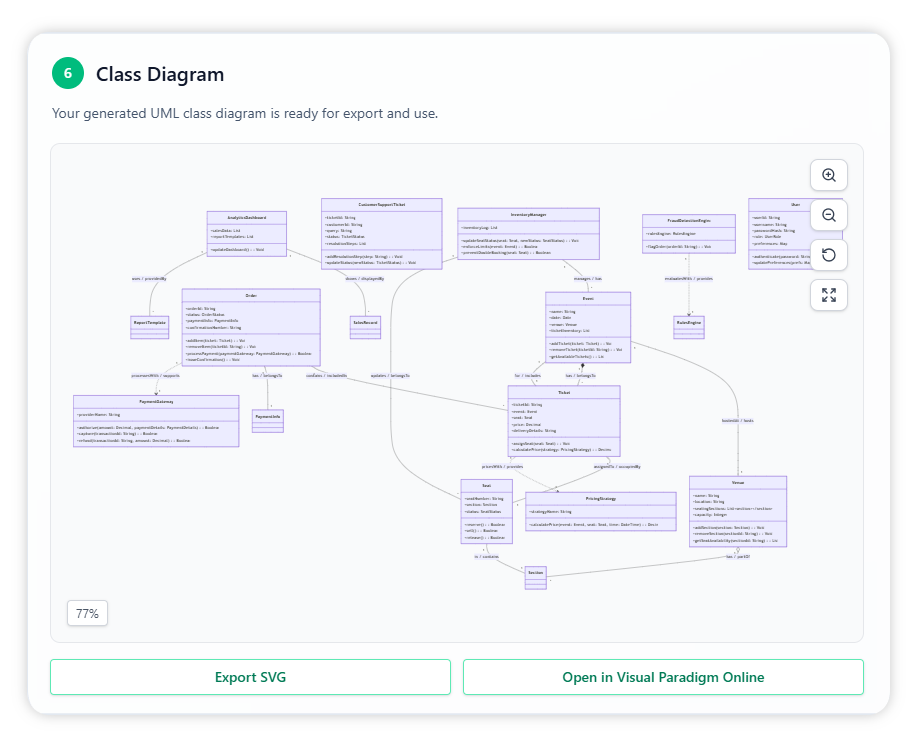Now Reading: Event Ticketing System Class Diagram Example | AI Class Diagram Generator
-
01
Event Ticketing System Class Diagram Example | AI Class Diagram Generator
Event Ticketing System Class Diagram Example | AI Class Diagram Generator
An Event Ticketing System simplifies the process of selling and managing tickets by linking event organizers with attendees through an accessible online and mobile interface. It manages event listings, seat reservations, payment processing, and electronic ticket delivery, all while ensuring a smooth, secure, and efficient purchasing experience.
1 | Input Problem Domain
Begin by entering the problem domain: Event Ticketing System. This initial step provides the AI with the context it needs to outline the solution’s boundaries, essential processes, and intended functionality.
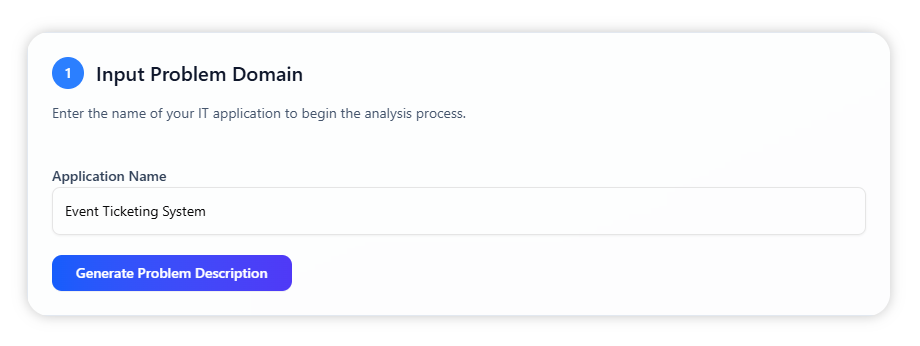
2 | Generated Problem Description
Based on the provided domain, the AI produces a detailed problem description that includes features such as real-time seat selection, dynamic pricing adjustments, secure payment handling, and instant confirmation. You can modify this generated text to ensure it fully matches the requirements of your specific ticketing solution.
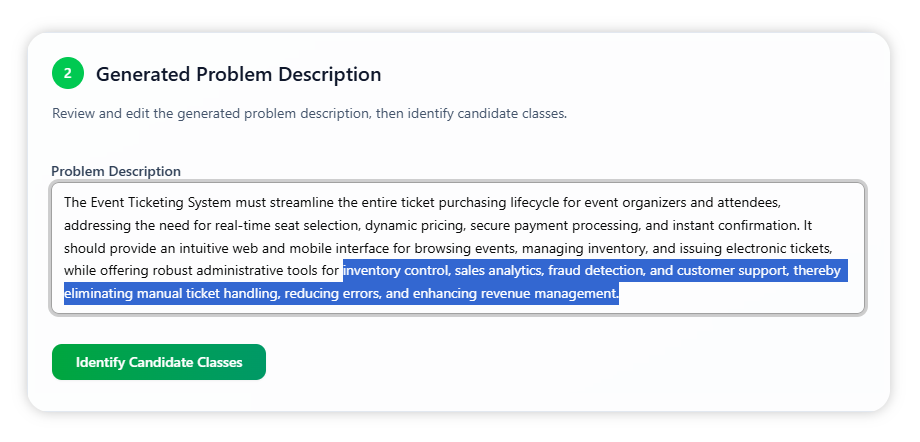
3 | Identified Candidate Classes
From the refined description, the AI extracts key domain classes such as Event, Venue, Ticket, Order, and Payment. Each suggested class includes an explanation of its purpose in the system and, where applicable, reasons why certain terms may not meet the definition of a class. The results are neatly presented for easy review.
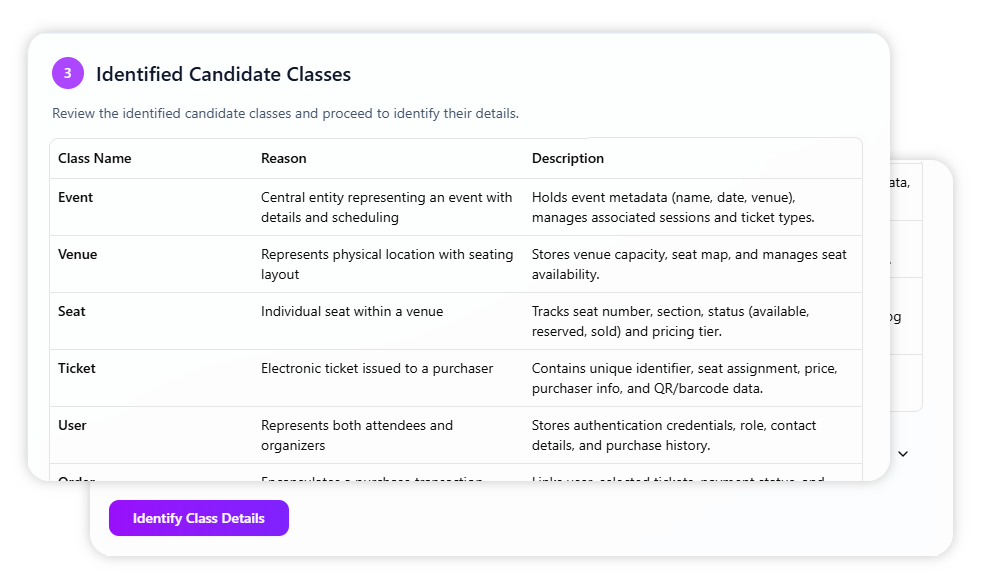
4 | Identified Class Details
Once the class list is confirmed, the AI outlines relevant attributes and operations for each one. Attributes define the core data each class holds—like ticket numbers, event dates, or venue capacity—while operations describe the tasks they can perform, such as processing an order or updating availability. This breakdown forms a structured foundation for system design.
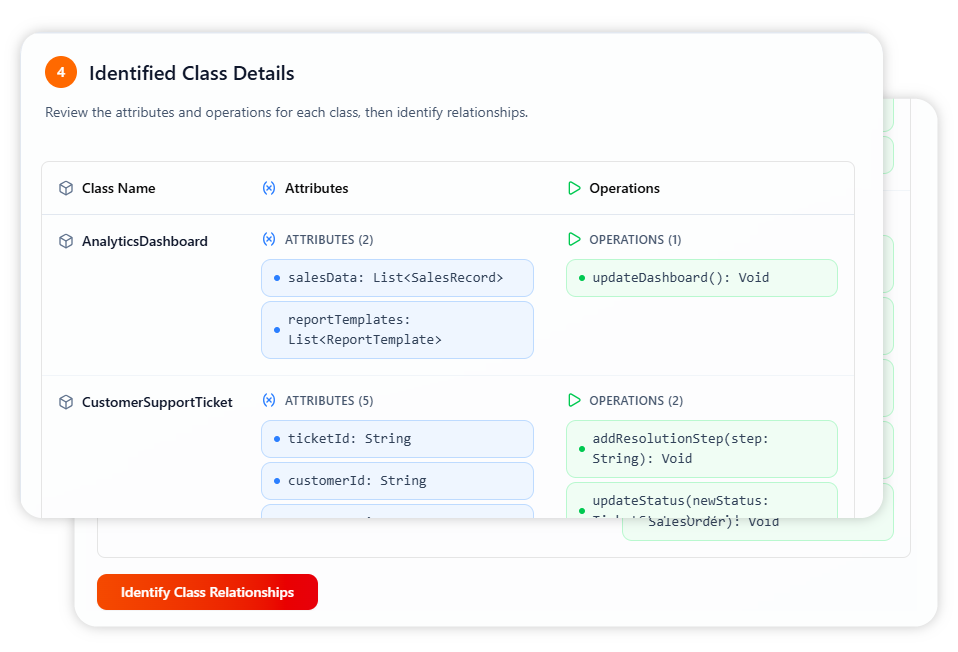
5 | Identify Class Relationships
The AI then determines how the classes interact. This includes identifying the origin and destination of each relationship, describing its purpose, and specifying the type of link, helping to clarify the overall interaction framework of the ticketing system.
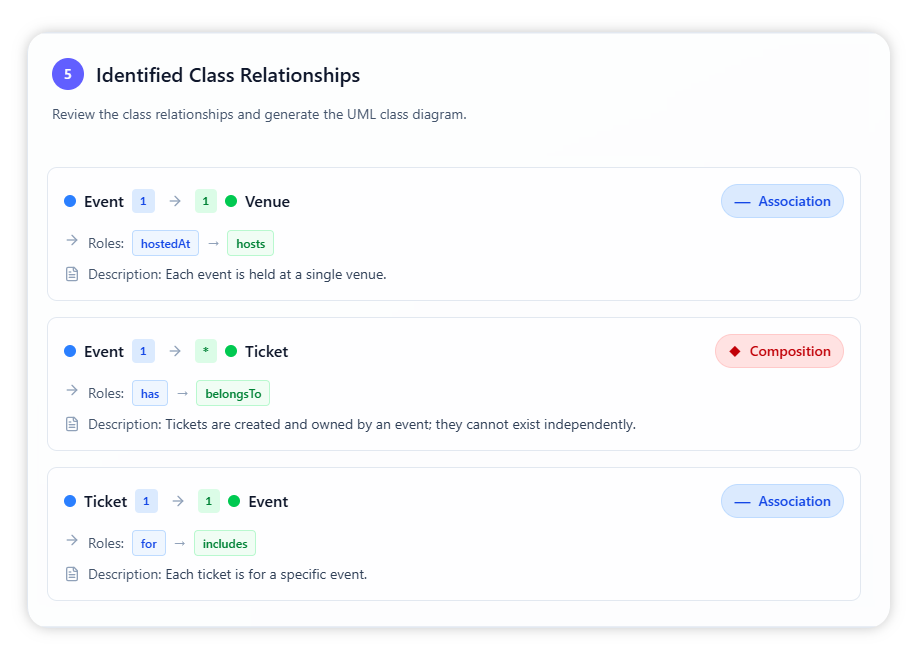
6 | Class Diagram
Finally, all chosen classes, their attributes, and defined relationships are assembled into a complete UML class diagram. You can instantly preview it in your browser, download it in SVG format, or open it in Visual Paradigm Online for further customization and refinement.
